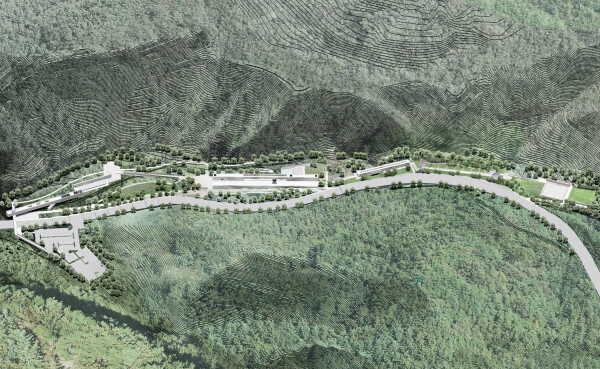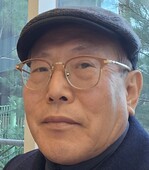
DAEJEON, South Korea – A decade has passed since the South Korean government first pledged to construct a memorial for civilian victims of the Korean War in Dong-gu, Daejeon. Yet, the solemn ground of San-nae Gollyeong-gol, a site of immense historical tragedy, remains untouched by the initial groundbreaking. The protracted delay in establishing the "Truth and Reconciliation Forest," as the facility is tentatively named, has deeply frustrated elderly survivors and victim families, who voice their despair over the ticking clock on their last wish: to honor their lost loved ones before their own time runs out.
The proposed memorial site, located in Nangwol-dong, Dong-gu, is no ordinary piece of land. Known ominously as "San-nae Gollyeong-gol" (literally "Bone Valley" or "Skull Valley"), it earned the chilling moniker "the world's longest grave" due to the kilometer-long stretch where thousands of civilians were brutally massacred and interred in mass graves by military and police forces during the Korean War. These victims were largely inmates from Daejeon Prison, many of whom had been incarcerated in connection with the National Bodo League Incident or the Jeju 4.3 Uprising. Their bodies, piled in indiscriminate heaps and covered hastily, bear silent witness to one of the darkest chapters in modern Korean history.
A Legacy of Atrocities: Understanding the Context
The Korean War (1950-1953) was not merely a conflict between North and South Korean armies; it was also a period marked by widespread atrocities against civilians, committed by all sides. In the early stages of the war, as South Korean forces retreated and North Korean forces advanced, and vice-versa, both sides engaged in summary executions of perceived collaborators or ideological opponents. The San-nae massacre is a harrowing example of this brutal period, deeply intertwined with events like the National Bodo League Incident and the Jeju 4.3 Uprising.
The National Bodo League (National Guidance Alliance) was ostensibly an anti-communist re-education program established by the South Korean government in 1949. However, it quickly became a mechanism for control and, ultimately, mass extermination. Under the guise of preventing communist infiltration, hundreds of thousands of South Korean citizens were forcibly registered, often including former leftists, suspected sympathizers, or even those coerced into joining to meet quotas. When the Korean War erupted in June 1950, fearing that these individuals might side with the invading North Korean forces, the South Korean government initiated a nationwide purge. Thousands of Bodo League members, along with political prisoners and ordinary civilians, were summarily executed without trial. The Bodo League massacres, which occurred across the country, represent one of the largest state-sponsored killings of civilians in modern history. Daejeon Prison, and subsequently San-nae Gollyeong-gol, became a grim epicenter for these executions, particularly for those from the central region. Estimates suggest that between 1,800 and 7,000 individuals were massacred in the San-nae valley between June 28 and July 17, 1950, alone.
Preceding the Korean War, the Jeju 4.3 Uprising (1948-1954) also contributed to the civilian population filling Daejeon Prison. This tragic event began as a popular uprising on Jeju Island against the division of Korea and the unilateral establishment of a separate government in the South. What started as protests escalated into a brutal suppression campaign by the South Korean government and its allied forces, resulting in widespread massacres, scorched-earth tactics, and forced displacement. An estimated 14,000 to 30,000 Jeju islanders—up to 10% of the island's population—were killed, with many more tortured or imprisoned. Survivors were often labeled "reds" or "communists," and many were transferred to mainland prisons like Daejeon, where they became vulnerable targets during the early days of the Korean War.
The Quest for Truth and Reconciliation
The impetus for the San-nae memorial stems from the recommendations of the First Truth and Reconciliation Commission (TRC) of South Korea, established in 2005. Modeled partly after South Africa's post-apartheid commission, the TRC was tasked with investigating various historical injustices, including massacres during the Korean War, human rights abuses under authoritarian regimes, and abuses during the Japanese colonial era. The commission's primary aim was to uncover hidden truths, acknowledge the suffering of victims, restore their honor, and foster reconciliation within society. It recommended the exhumation of remains and the establishment of a unified memorial facility for civilian victims of the Korean War. This led to the selection of San-nae, aiming for a national-level facility to commemorate victims from across the country, not just those from Daejeon.
Initially, the Dong-gu district office was slated to oversee the project, with the goal of completing the "San-nae Peace and History Park" by 2020. The plan envisioned a 98,000 square meter site featuring a 3,800 square meter exhibition hall, a memorial tower, and various commemorative and educational spaces. However, the path to realization has been fraught with challenges.
A Decade of Delays and Disappointment
The project's timeline has been repeatedly pushed back. The initial completion target of 2020 was first extended to 2024. Then, significant increases in construction costs, exacerbated by rising material prices, necessitated a feasibility re-evaluation by the Ministry of Economy and Finance. This process alone consumed nearly two years, ultimately delaying the projected completion to 2027.
Despite the feasibility study's approval late last year, the project faces yet another hurdle: a lack of allocated budget for the current year. This means construction cannot commence until 2026 at the earliest, further eroding the trust and patience of the aging victim families.
Jeon Mi-kyung, head of the Daejeon San-nae Incident Bereaved Families' Association, articulates the profound anguish felt by survivors. "So much time has passed, and many of our elderly family members have already passed away," she laments. "The few surviving relatives consider placing their parents' memorial tablets in the park before they die as their last wish. Our families are burning with anxiety every day. We can only feel at ease when the construction finally begins, but until then, we cannot trust the government and remain plagued by daily anxieties."
Beyond Commemoration: The Demand for Dignified Repose
For the bereaved families, the establishment of the memorial park is not the sole resolution. A significant point of contention revolves around the disposition of the unearthed remains. The government's current plan for the memorial, as understood by some families, involves the collective cremation and enshrinement of all identified remains. However, victims' families vehemently oppose this, viewing it as an attempt to erase the gruesome history of the massacre.
"The government intends to collectively cremate and enshrine the victims' remains, but this is tantamount to erasing the history of the massacres," states Jeon Mi-kyung. She emphasizes the advancements in forensic science: "Unlike in the past, DNA identification technology has developed significantly. Therefore, the remains must be preserved intact so that the victims' identities can be confirmed later."
To date, approximately 1,400 sets of remains have been exhumed from the San-nae massacre site. These, along with civilian remains exhumed from other regions, are currently held in temporary enshrinement at the Sejong Memorial House. Upon completion of the San-nae Peace and History Park, an estimated 4,000 sets of civilian remains are expected to be interred there, underscoring the vast scale of the tragedy.
Government's Response and Future Outlook
An official from the Ministry of Interior and Safety acknowledged the delays, stating, "The feasibility study results came out at the end of last year, so they were not reflected in this year's budget. However, the design is expected to be finalized soon, and we are currently preparing next year's budget." Regarding the contentious issue of collective cremation, the official clarified, "The collective enshrinement of remains is not a confirmed plan. We will fully consider the opinions of the bereaved families and consult with relevant agencies regarding the method of enshrinement in the future."
The challenges in establishing such a memorial are not unique to San-nae. Constructing sites of memory, especially those dealing with traumatic historical events, often involves complex negotiations between historical accuracy, public memory, architectural design, and the deeply personal grief of survivors. Debates over the form of commemoration, the display of remains, and the degree of government accountability frequently arise. Ensuring that the memorial truly serves as a space for healing, education, and reconciliation, rather than merely a monument, requires sensitive engagement with all stakeholders.
As the years continue to pass, the urgency for the San-nae Peace and History Park grows with each passing day for the elderly survivors. Their plea for a dignified resting place and a proper acknowledgment of their families' suffering resonates far beyond the valley, echoing the enduring need for truth, justice, and reconciliation in a nation still grappling with the legacies of its tumultuous past. The completion of this memorial is not just about erecting a structure; it is about providing closure, affirming human dignity, and ensuring that the painful lessons of history are never forgotten.
[Copyright (c) Global Economic Times. All Rights Reserved.]






























